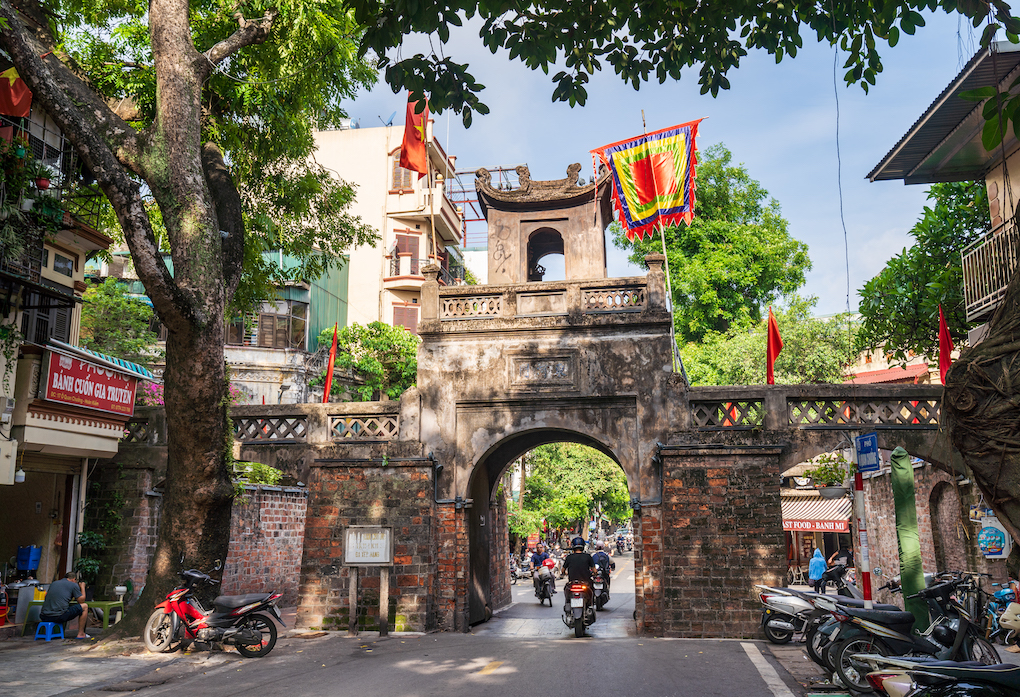Hanoi Architecture Tour: Discover the Soul of Vietnam’s Capital Through Its Buildings
Hanoi Architecture Tour: Discover the Soul of Vietnam’s Capital Through Its Buildings

Introduction: Walk Through History, One Building at a Time
Hanoi is more than just Vietnam’s political and cultural capital—it is a living museum of architecture. As one strolls through its bustling streets, each corner tells a story. From ancient temples to grand colonial mansions and modern marvels, Hanoi's buildings showcase a complex, layered history shaped by dynasties, colonization, war, and resilience. This article explores the ultimate Hanoi architecture tour, designed for travelers who want to experience the city’s soul through its most expressive medium—its structures.
Whether you're an architecture enthusiast, history buff, or simply curious traveler, join us as we walk through Hanoi’s most iconic architectural districts, backed by history, local insights, and expert commentary.
The Architectural Layers of Hanoi
1. Ancient Vietnamese Architecture: Temples, Pagodas & Dynasties
Long before the French arrived or modern developments emerged, Vietnamese dynasties left a spiritual and artistic imprint.
-
Temple of Literature (Văn Miếu – Quốc Tử Giám)
Built in 1070, this is Vietnam’s first national university. The architecture blends Confucian elegance with symbolic harmony.-
Real-world tip: Visit in the early morning to avoid crowds and experience the tranquil courtyards with birdsong in the air.
-
-
One Pillar Pagoda (Chùa Một Cột)
Resembling a lotus emerging from the water, it reflects ancient Buddhist architectural ideals.-
Fun fact: It was rebuilt after being destroyed in 1954 and is now a national symbol of resilience.
-
“Vietnamese architecture mirrors the spiritual and cultural identity of its people.” – Dr. Nguyễn Hữu Phú, Architectural Historian
2. Colonial Grandeur: The French Quarter Experience

The French colonial period (1887–1954) gave rise to tree-lined boulevards, yellow-painted villas, and Beaux-Arts landmarks that make up today’s Hanoi French Quarter.
Must-Visit Architectural Gems in the French Quarter:
| Building | Style | Year Built | Highlights |
|---|---|---|---|
| Hanoi Opera House | Beaux-Arts | 1911 | Modeled after Palais Garnier in Paris |
| St. Joseph’s Cathedral | Gothic Revival | 1886 | Inspired by Notre-Dame de Paris |
| Metropole Hotel | Colonial luxury | 1901 | Frequented by Graham Greene & Charlie Chaplin |
-
Insider Tip: Book a coffee at La Terrasse to enjoy colonial ambience and people-watching in true Parisian style.
"Walking the French Quarter is like time-traveling through Indochina.” – Lonely Planet
3. Post-War & Socialist Modernism: Concrete and Collectivism
After independence, Hanoi witnessed a shift toward functionalist architecture with socialist ideals—simple, block-style housing and concrete buildings dominating the 1970s–1990s skyline.
Key Examples:
-
Friendship Cultural Palace
Built with Soviet assistance in 1985, it’s a symbol of Vietnam-Soviet camaraderie. -
Lenin Park Residential Blocks
While visually plain, these reflect Vietnam's post-war housing solution for working-class families.
Though often overlooked, this era reflects a crucial chapter in Vietnam’s architectural narrative, showing its transition from conflict to stability.
4. Contemporary Innovations: Fusion of Past and Future
Today, Vietnamese architects are redefining modernism, fusing eco-conscious design with cultural heritage.
Notable Modern Structures in Hanoi:
-
Viettel Headquarters by Vo Trong Nghia Architects
-
Features vertical gardens and energy-efficient design.
-
Reflects Vietnam’s green architecture movement.
-
-
Museum of Ethnology
-
A blend of tribal stilt-house designs with modern galleries, highlighting Vietnam’s ethnic diversity through architecture.
-
-
Lotte Center Hanoi
-
One of the tallest skyscrapers in the country, it offers panoramic views of both old and new Hanoi.
-
Planning Your Hanoi Architecture Tour
Best Way to Explore:
-
Guided walking tours in the Old Quarter and French Quarter
-
Self-drive private car tours for more spread-out sites
👉 Tip: For a hassle-free experience, check out this curated 3-day private car itinerary:
Hanoi to Sapa by Private Car (3D2N)
Ideal Tour Duration:
-
Half-day for French Quarter
-
Full-day for combined ancient-modern exploration
-
Multi-day for in-depth, architectural photography experiences
Summary: Why Hanoi’s Architecture Matters
Hanoi’s architecture is not merely about buildings—it’s about stories carved in stone, brick, and bamboo. From centuries-old pagodas and colonial elegance to socialist monoliths and eco-modernism, Hanoi tells its history through structures more vividly than any textbook ever could.
Key Takeaways
-
Hanoi’s architecture reflects a timeline of cultural and political evolution.
-
Key areas to explore include the Old Quarter, French Quarter, and emerging modern hubs.
-
A curated tour can deepen your understanding, especially with local guides and historical context.
-
Don't overlook modern architecture—it’s shaping Vietnam’s sustainable future.
Ready to Embark on an Architectural Journey Through Hanoi?
Whether it’s a solo walk, a guided tour, or a private car journey to architectural landmarks, Hanoi awaits your discovery. Start planning your experience now:
👉 Explore Hanoi Architecture Tours
Let the buildings speak. Let the city breathe its stories into your journey.
Nhận xét
Đăng nhận xét